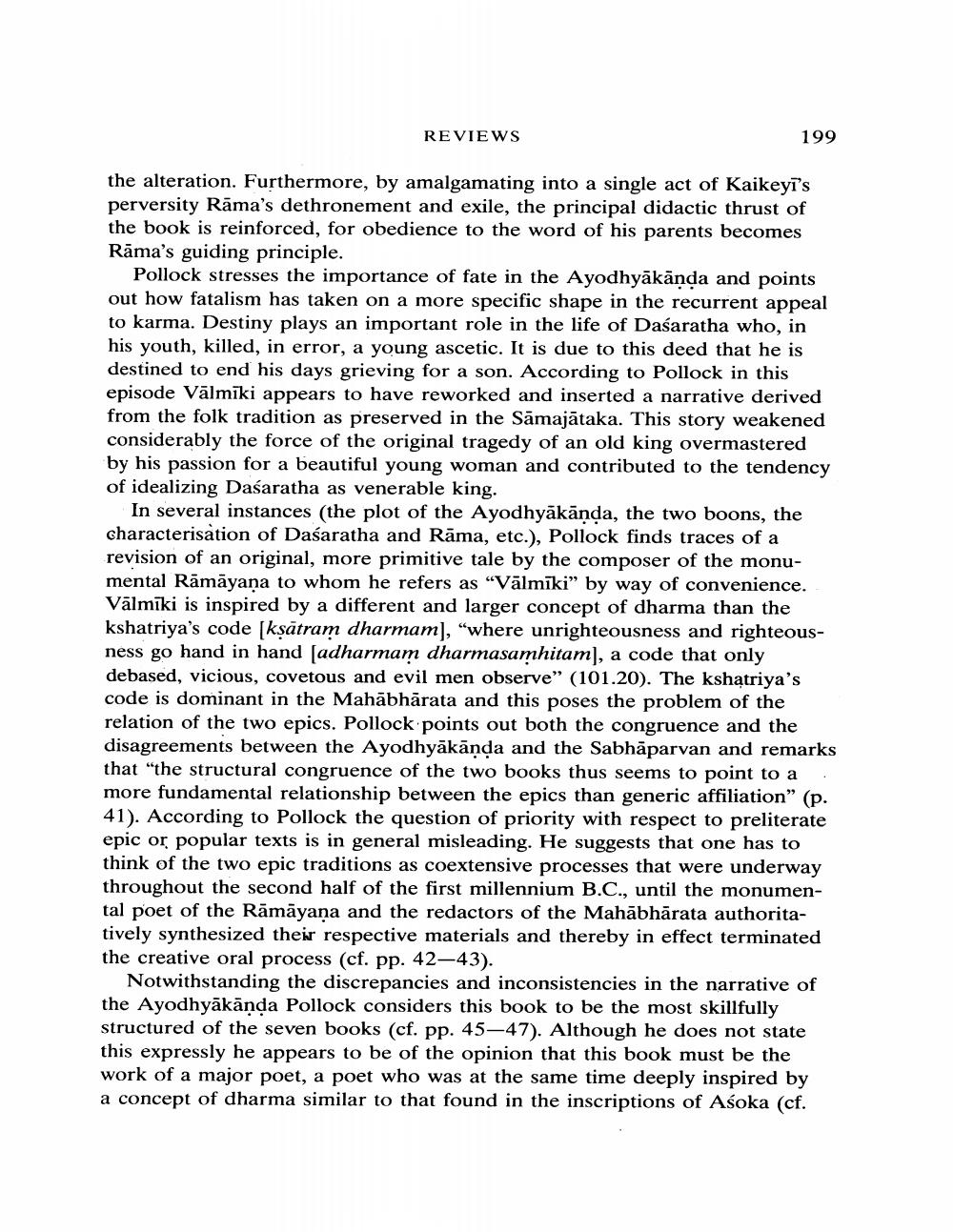Book Title: Reviews Of Diffeent Books Author(s): J W De Jong Publisher: J W De Jong View full book textPage 5
________________ REVIEWS 199 the alteration. Furthermore, by amalgamating into a single act of Kaikeyi's perversity Rāma's dethronement and exile, the principal didactic thrust of the book is reinforced, for obedience to the word of his parents becomes Rāma's guiding principle. Pollock stresses the importance of fate in the Ayodhyākānda and points out how fatalism has taken on a more specific shape in the recurrent appeal to karma. Destiny plays an important role in the life of Daśaratha who, in his youth, killed, in error, a young ascetic. It is due to this deed that he is destined to end his days grieving for a son. According to Pollock in this episode Vālmīki appears to have reworked and inserted a narrative derived from the folk tradition as preserved in the Sāmajātaka. This story weakened considerably the force of the original tragedy of an old king overmastered by his passion for a beautiful young woman and contributed to the tendency of idealizing Dasaratha as venerable king. In several instances (the plot of the Ayodhyākānda, the two boons, the characterisation of Daśaratha and Rāma, etc.), Pollock finds traces of a revision of an original, more primitive tale by the composer of the monumental Rāmāyaṇa to whom he refers as "Vālmīki" by way of convenience. Vālmīki is inspired by a different and larger concept of dharma than the kshatriya's code [ksātram dharmam], "where unrighteousness and righteousness go hand in hand (adharmam dharmasamhitam), a code that only debased, vicious, covetous and evil men observe” (101.20). The kshatriya's code is dominant in the Mahābhārata and this poses the problem of the relation of the two epics. Pollock points out both the congruence and the disagreements between the Ayodhyākānda and the Sabhāparvan and remarks that “the structural congruence of the two books thus seems to point to a . more fundamental relationship between the epics than generic affiliation” (p. 41). According to Pollock the question of priority with respect to preliterate epic or popular texts is in general misleading. He suggests that one has to think of the two epic traditions as coextensive processes that were underway throughout the second half of the first millennium B.C., until the monumental poet of the Rāmāyana and the redactors of the Mahābhārata authoritatively synthesized their respective materials and thereby in effect terminated the creative oral process (cf. pp. 42-43). Notwithstanding the discrepancies and inconsistencies in the narrative of the Ayodhyākānda Pollock considers this book to be the most skillfully structured of the seven books (cf. pp. 45–47). Although he does not state this expressly he appears to be of the opinion that this book must be the work of a major poet, a poet who was at the same time deeply inspired by a concept of dharma similar to that found in the inscriptions of Asoka (cf.Page Navigation
1 ... 3 4 5 6 7 8 9 10 11 12 13 14 15 16 17 18 19 20 21 22 23 24 25 26 27 28 29 30 31 32 33 34 35 36 37 38 39 40 41 42 43 44 45 46 47 48 49 50 51 52 ... 60
